North Carolina, a tapestry woven with majestic mountains, sprawling coastlines, and glistening lakes, is a haven for fishing enthusiasts. From the heart-pounding battles with trophy largemouth bass in man-made reservoirs to the serene experience of fly-fishing for elusive trout in cascading mountain streams, North Carolina’s diverse aquatic ecosystems cater to every angler’s desires. This comprehensive guide delves into seven of the state’s most treasured fishing destinations, providing detailed information on target species, ideal seasons, unique features, and hidden gems to transform your next fishing trip into an unforgettable adventure.
Lake Norman: A Bass Fishing Mecca
Location: Nestled conveniently 30 minutes north of Charlotte, making it a popular escape for city dwellers.
Claim to Fame: Boasting the title of the largest artificial lake in North Carolina, Lake Norman is a renowned bass fishing hotspot.
Target Species: A true angler’s paradise, Lake Norman offers a bounty of fish species. Largemouth bass reigns supreme, with healthy populations promising exciting battles. White bass, spotted bass, channel catfish, flathead catfish, crappie, and bluegill round out the impressive list, ensuring a variety of fishing experiences.
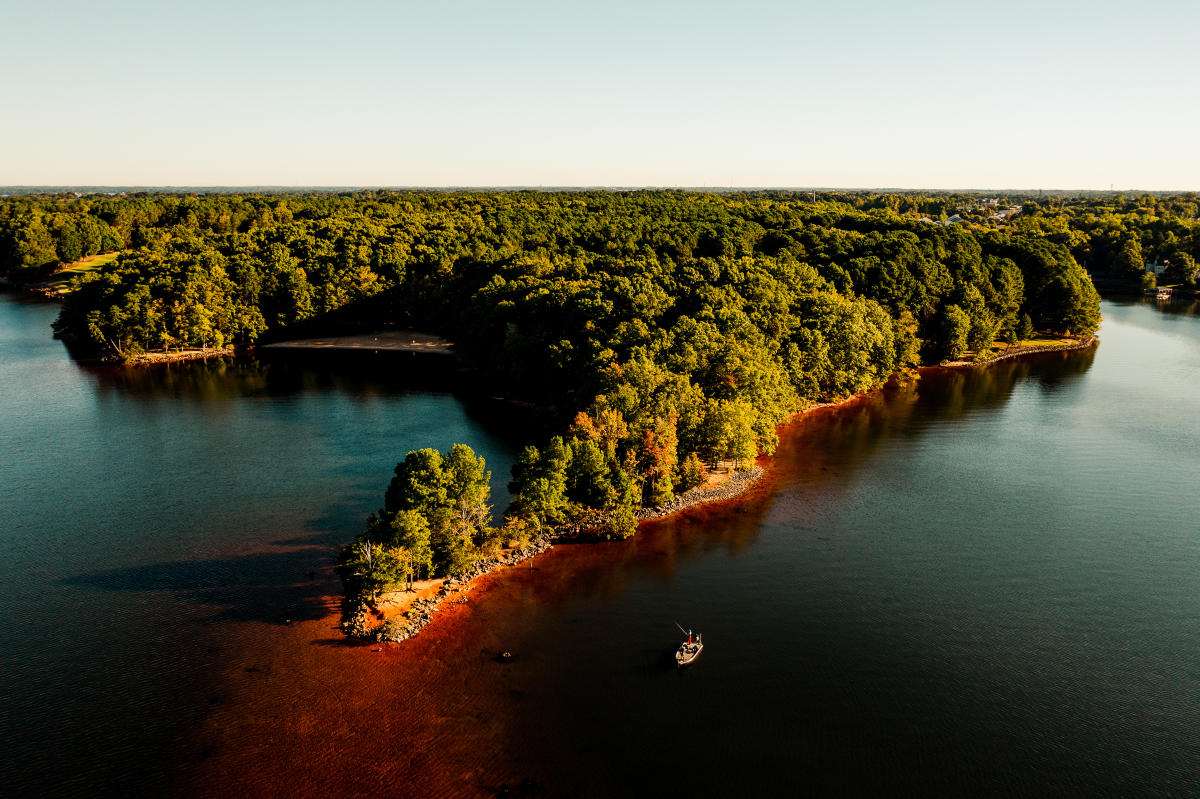
Prime Seasons: Year-round fishing is possible on Lake Norman. Spring brings the prespawn period, with bass actively feeding in preparation for spawning. Summer offers excellent topwater fishing opportunities, while fall sees the bass returning to deeper waters. Winter provides its own unique challenge, with the potential for trophy catches as bass become more lethargic in the colder water.
Beyond the Catch: The extensive shoreline, exceeding 500 miles, offers ample opportunities for bank fishing. However, for a more comprehensive exploration of the lake, numerous marinas and boat rentals are readily available. Lake Norman caters to both casual and competitive anglers, with frequent fishing tournaments held throughout the year.
Insider Tip: Lake Norman encompasses a vast area. Utilizing fishing electronics like sonar units can be highly beneficial in pinpointing underwater structures that attract fish. Research specific coves and channels known to harbor bass depending on the season. During the hot summer months, early mornings and evenings offer the most productive fishing times as bass seek cooler water temperatures.
Ocracoke Island, Outer Banks: A Remote Fishing Paradise
Location: Situated on the Outer Banks, Ocracoke Island beckons anglers seeking a tranquil escape coupled with exceptional fishing opportunities.
Allure: Accessible by ferry, Ocracoke Island exudes a sense of remoteness, offering a pristine escape from the hustle and bustle of everyday life. The historic Ocracoke Lighthouse, standing sentinel over the island, adds to the charm and creates a picturesque backdrop for your fishing adventure.
Target Species: Deep-sea fishing enthusiasts will find themselves in paradise. Species like red drum, bluefish, flounder, Spanish mackerel, and croaker teem in the offshore waters surrounding the island. Nearshore fishing also yields impressive catches, with opportunities to target sharks and cobia.
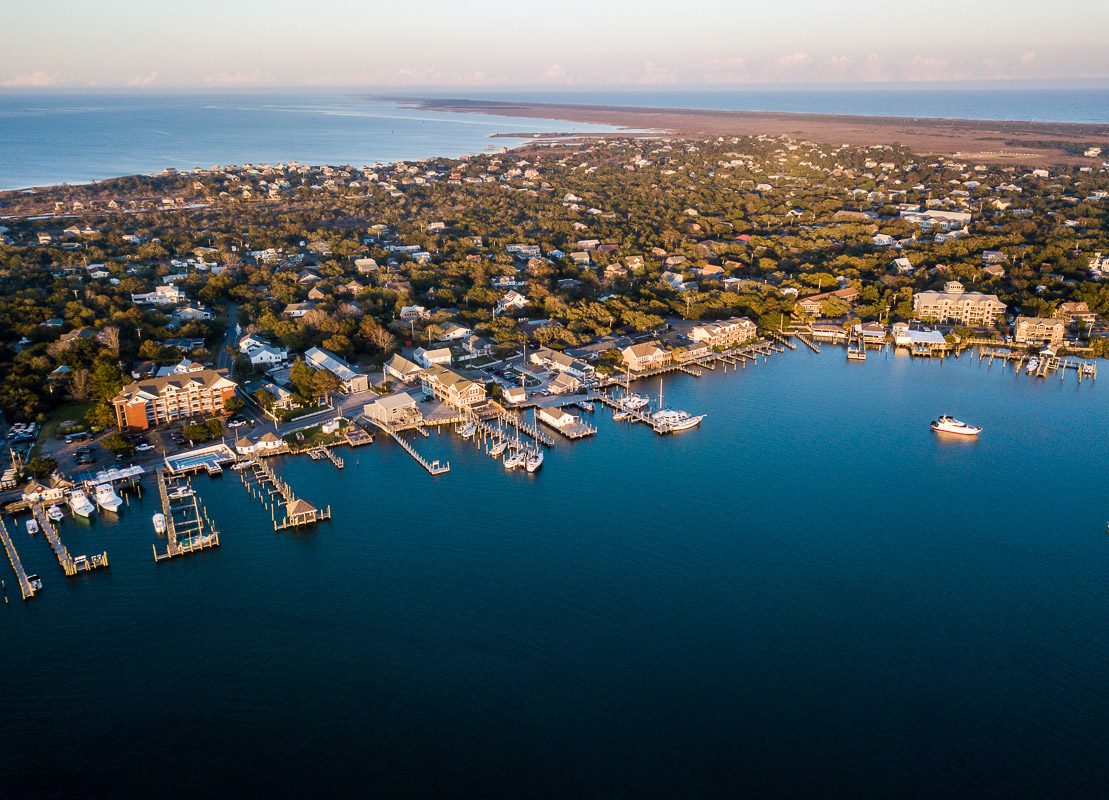
Prime Seasons: Spring to fall offers the most pleasant weather conditions for exploring the waters around Ocracoke Island. Summer sees the arrival of Spanish mackerel and cobia, while fall is prime time for red drum fishing.
Insider Tip: Fishing charters are readily available on Ocracoke Island and offer guided experiences for anglers of all skill levels. These charters provide local knowledge of productive fishing spots and can help you target specific species. Be mindful of weather conditions, as offshore fishing can be susceptible to sudden changes. Always check the latest forecasts and ensure your chosen charter prioritizes safety measures.
Jordan Lake: A Family-Friendly Fishing Getaway
Location: Situated conveniently west of Raleigh, Jordan Lake provides a welcome escape from the urban environment.
Target Species: Jordan Lake caters to anglers of all ages and experience levels. Largemouth bass, channel catfish, crappie, bluegill, striped bass, and yellow perch are all prevalent, offering a diverse range of fishing opportunities.

Prime Seasons: Spring to fall offers the most productive fishing conditions on Jordan Lake. Spring is a prime time for bass fishing, while summer provides excellent opportunities for crappie and catfish. Fall sees the return of striped bass as they migrate up the Cape Fear River into the lake.
Beyond the Catch: Jordan Lake isn’t just about fishing; it’s a haven for outdoor enthusiasts. Campgrounds are situated around the lake, perfect for setting up base camp and enjoying the natural beauty. Local shops, restaurants, and lodging options cater to families and anglers seeking a well-rounded vacation experience. Boating and kayaking are popular activities on the lake, allowing you to explore different areas and enjoy the scenery.
Insider Tip: Jordan Lake offers ample opportunities for bank fishing, particularly from designated fishing piers and shorelines. However, for a more comprehensive exploration of the lake and access to deeper water areas holding trophy fish, consider renting a boat or joining a guided fishing trip. Several marinas around the lake offer boat rentals and cater to various fishing needs. Be sure to research and obtain any necessary fishing licenses before heading out on the water. Jordan Lake is a popular spot, so expect to share the space with other anglers, especially on weekends and during peak seasons. Practice courtesy and respect fellow anglers while enjoying your time on the lake.
Lake Fontana: A Breathtaking Backdrop for Bass Fishing
Location: Nestled amidst the breathtaking scenery of Western North Carolina, Lake Fontana offers an unforgettable fishing experience.
Allure: Surrounded by the majestic Blue Ridge Mountains, Lake Fontana’s picturesque setting is a sight to behold. The lake itself boasts over 10,230 acres of surface area, with numerous streams feeding into it, creating a diverse aquatic ecosystem.
Target Species: Bass fishing reigns supreme at Lake Fontana. Largemouth bass, smallmouth bass, and spotted bass are all present, with the lake holding the record for the largest smallmouth bass ever caught in North Carolina. Other species like walleye, bluegill, lake trout, muskellunge, and crappie add to the fishing diversity.
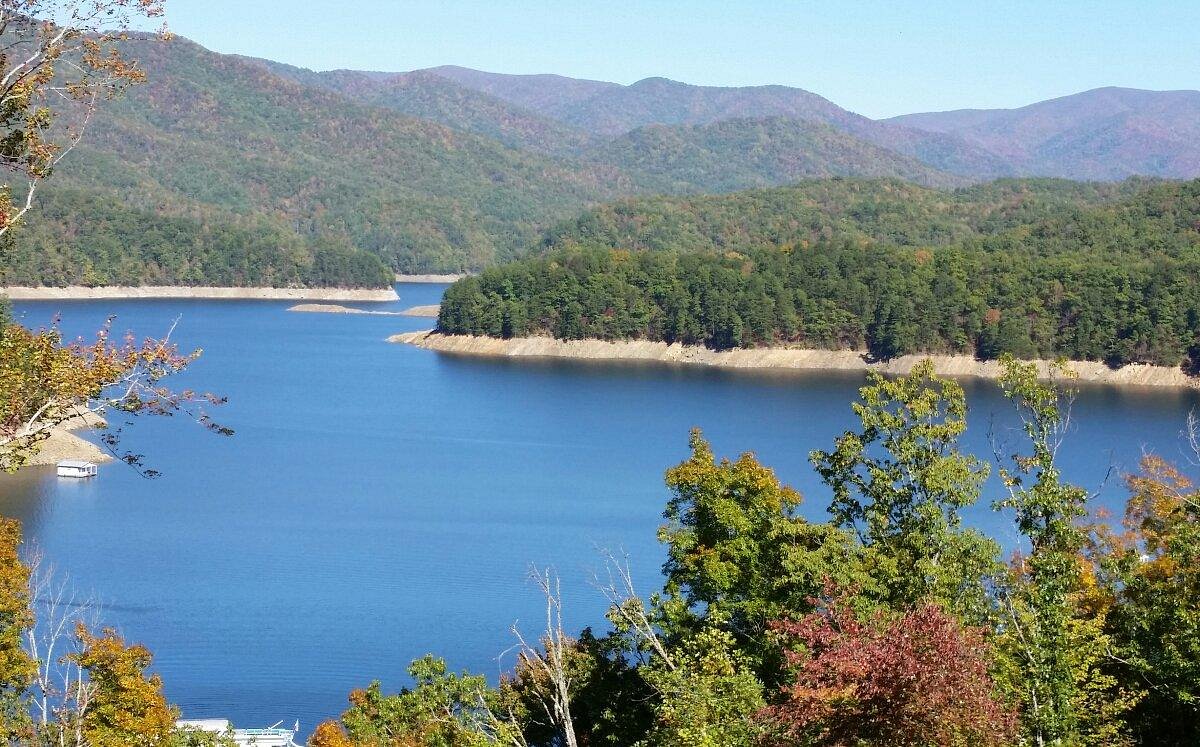
Prime Seasons: Year-round fishing is possible on Lake Fontana. Spring offers ideal conditions for bass fishing, with the fish actively feeding before the summer spawn. Summer provides opportunities for deeper water fishing for trout and muskie. Fall brings vibrant foliage to the surrounding mountains and offers excellent fishing for various species. Winter can be productive for targeting largemouth bass in their deeper winter haunts.
Insider Tip: Due to Lake Fontana’s size and diverse underwater structure, utilizing fishing electronics like sonar units is highly recommended. Research specific areas known to hold bass depending on the season. Jigs, crankbaits, and spinnerbaits are popular lure choices for bass fishing in the lake. For trout fishing, consider using smaller lures like inline spinners or flies that mimic insects found in the lake. The strong currents in some areas of the lake necessitate the use of a sturdy and well-maintained boat for safe navigation.
Great Smoky Mountains National Park: A Fly-Fishing Paradise
Location: Encompassing a vast swathe of the Western North Carolina mountains, the Great Smoky Mountains National Park offers a unique and unforgettable fishing experience.
Allure: The park boasts thousands of miles of pristine streams, many cascading down the mountainsides. These streams provide a haven for fly-fishing enthusiasts, offering opportunities to target elusive trout species.
Target Species: Rainbow trout, brook trout, brown trout – all three species of trout can be found in the park’s streams. These fish thrive in the cool, clear waters and provide a thrilling challenge for fly-fishers.
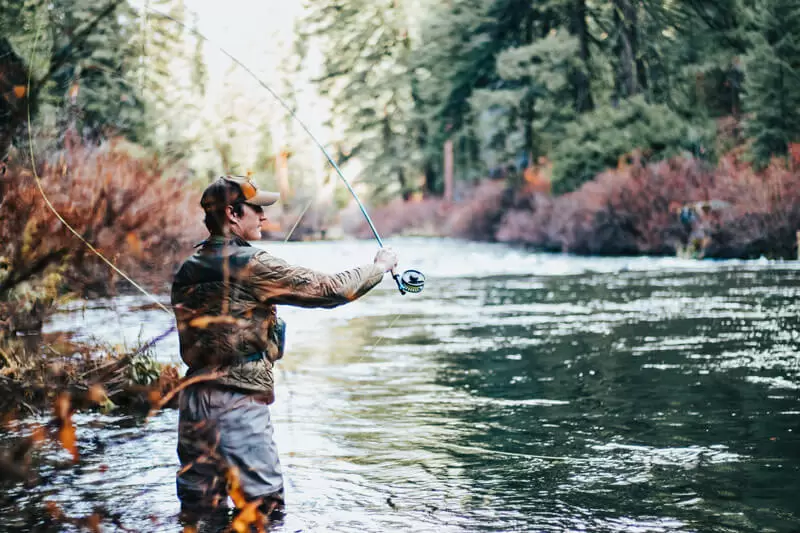
Prime Seasons: Spring and fall are the most productive seasons for trout fishing in the park. Spring offers cooler water temperatures and increased insect activity, which the trout feed on. Fall sees the water levels decrease, making some streams more accessible for wading anglers. Regulations: Fishing in the park is tightly regulated. Be sure to obtain a valid North Carolina fishing license and any additional permits required for specific areas within the park. Some streams may have limitations on bait and tackle usage, with many designated as fly-fishing only zones. Always practice catch-and-release fishing for trout to conserve the park’s delicate ecosystem.
Insider Tip: Research specific streams within the park that cater to your skill level and target species. Many streams are easily accessible from designated parking areas, while others require a short hike to reach. Wading boots with good traction are essential for navigating the slippery rocks and streams. Matching the hatch, a technique where you use flies that resemble the insects trout are currently feeding on, can significantly increase your success rate. Fly-fishing guides are available in the area and can offer valuable instruction and local knowledge, especially for beginners.
Lake James: A Year-Round Fishing Destination
Location: Situated in Western North Carolina, Lake James offers a scenic escape with exceptional fishing opportunities.
Target Species: This 6,800-acre lake boasts depths exceeding 120 feet, making it a prime location for summer fishing. Largemouth bass, blue catfish, crappie, northern pike, and muskellunge are all present in the lake, offering a diverse range of fishing experiences for anglers of all skill levels.
Prime Seasons: Summer reigns supreme for fishing on Lake James. The warm water temperatures trigger increased activity among bass and other species. Early mornings and evenings offer the most comfortable fishing conditions during the hot summer months. Fall can also be productive, with bass moving to shallower waters to feed before winter. While winter fishing is possible, the colder temperatures and potential for icy conditions make it less popular.
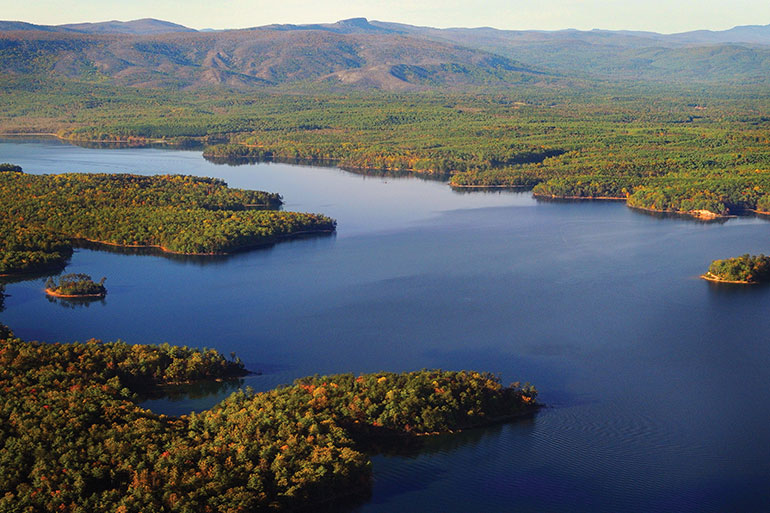
Insider Tip: Due to the lake’s depth and diverse fish populations, trolling can be a highly effective technique, particularly for targeting suspended fish like crappie and walleye. Downriggers can be used to reach deeper water holding trophy fish. Live bait like minnows and nightcrawlers are popular choices for catfish and larger bass. For muskie fishing, large bucktail lures and crankbaits that mimic prey fish are often used. Several marinas around the lake offer boat rentals and cater to various fishing needs. Some guided fishing trips specialize in muskie fishing on Lake James, offering valuable expertise for targeting these elusive predators. Be aware of potential afternoon thunderstorms during the summer months, which can cause sudden changes in weather conditions. Always check the latest forecasts and prioritize safety while on the water.
Tuckasegee River: A Mecca for Fly-Fishing and Smallmouth Bass
Location: Nicknamed “The Tuck,” the Tuckasegee River winds its way through the heart of Western North Carolina, renowned for its exceptional fly-fishing opportunities.
Allure: The Tuckasegee River is a haven for fly-fishing enthusiasts, with its cool, clear waters and abundant insect life providing a perfect habitat for trout. The scenic beauty of the surrounding mountains adds to the allure of fishing on this iconic river.
Target Species: Smallmouth bass is the star attraction of the Tuckasegee River, with healthy populations offering exciting battles for anglers. Rainbow trout and brown trout are also present, particularly in the upper stretches of the river.
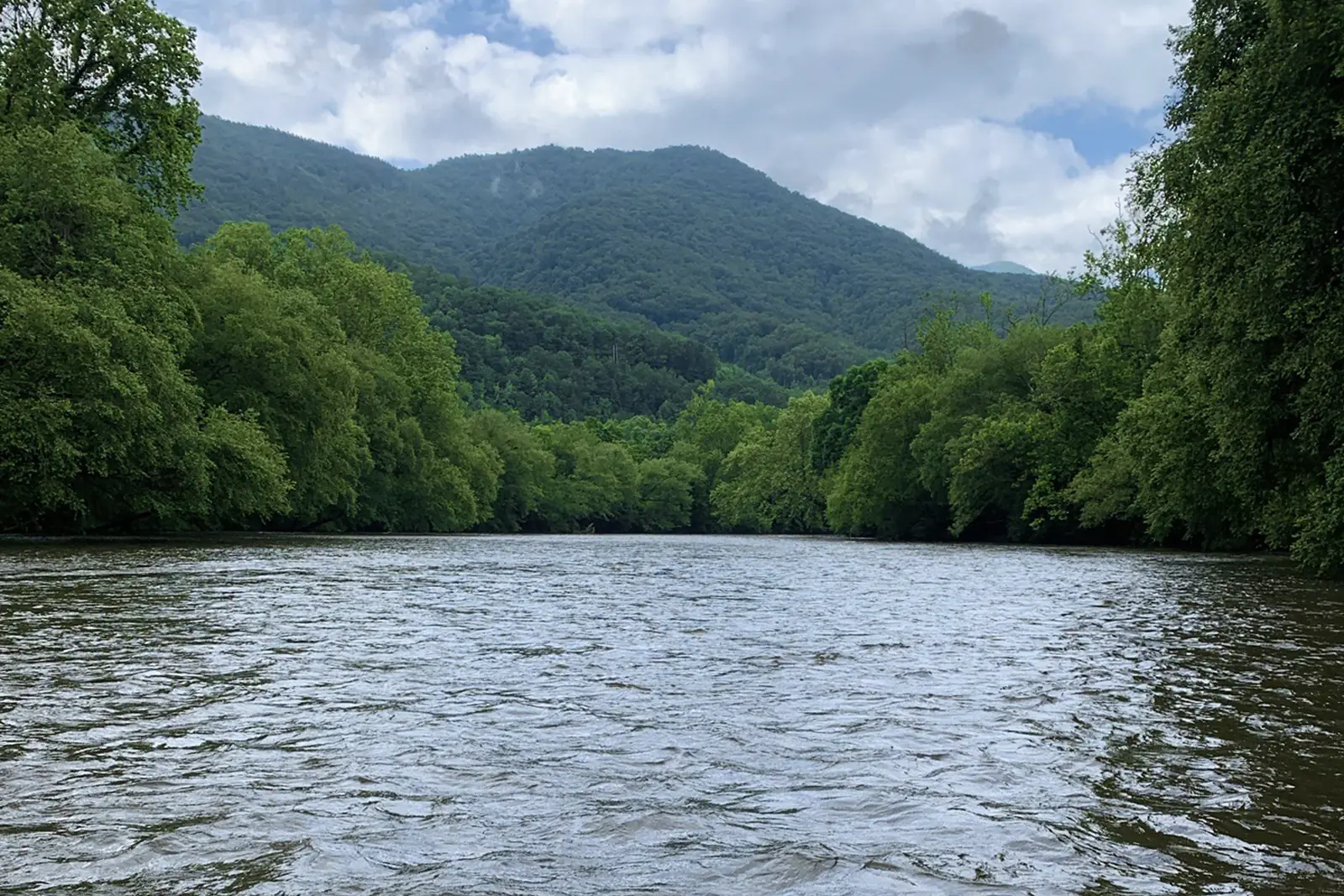
Prime Seasons: Spring and fall offer the most productive fishing conditions on the Tuckasegee River. Spring sees increased insect activity and cooler water temperatures, ideal for trout fishing. Fall brings vibrant colors to the surrounding mountains and offers good opportunities for both trout and bass fishing.
Insider Tip: The Tuckasegee River caters to various skill levels, with easily accessible sections perfect for beginners and more technical stretches that challenge experienced fly-fishers. Wading is a popular way to explore the river and target fish in specific areas. Dry flies that imitate insects like mayflies and caddisflies are commonly used for trout fishing. For smallmouth bass, streamers that mimic crayfish or baitfish are effective choices. Several fly-fishing shops and outfitters are located along the river, offering guided trips, equipment rentals, and valuable local knowledge. Be mindful of water flow levels, which can change rapidly after heavy rainfall. Always check the latest conditions before heading out and prioritize safety while wading in the river.
North Carolina’s diverse aquatic ecosystems offer a smorgasbord of fishing opportunities for every angler. From the vast, man-made Lake Norman to the cascading mountain streams of the Great Smoky Mountains National Park, the state provides a chance to experience the thrill of catching a trophy fish amidst breathtaking natural beauty. Remember, responsible fishing practices are crucial for ensuring healthy fisheries for future generations. Minimize your impact by practicing catch-and-release for certain species, properly disposing of fishing line and tackle, and respecting size and creel limits. With careful planning and a love for the outdoors, your next North Carolina fishing adventure promises to be an experience you’ll never forget. So, grab your fishing rod, pack your gear, and cast a line into the heart of North Carolina’s fishing paradise!

Robert Smith is the proud owner of Bait Barrels and Bows, a premier fishing sports store established in 1989. With over three decades of experience in the industry, Robert has honed his skills to become an expert angler, sharing his vast knowledge and passion for fishing with enthusiasts around the world. Through his store and writings, Robert provides invaluable tips and guidance, helping both novice and seasoned anglers improve their techniques and enjoy the sport to its fullest. His commitment to the fishing community is evident in his dedication to quality products and excellent customer service.

